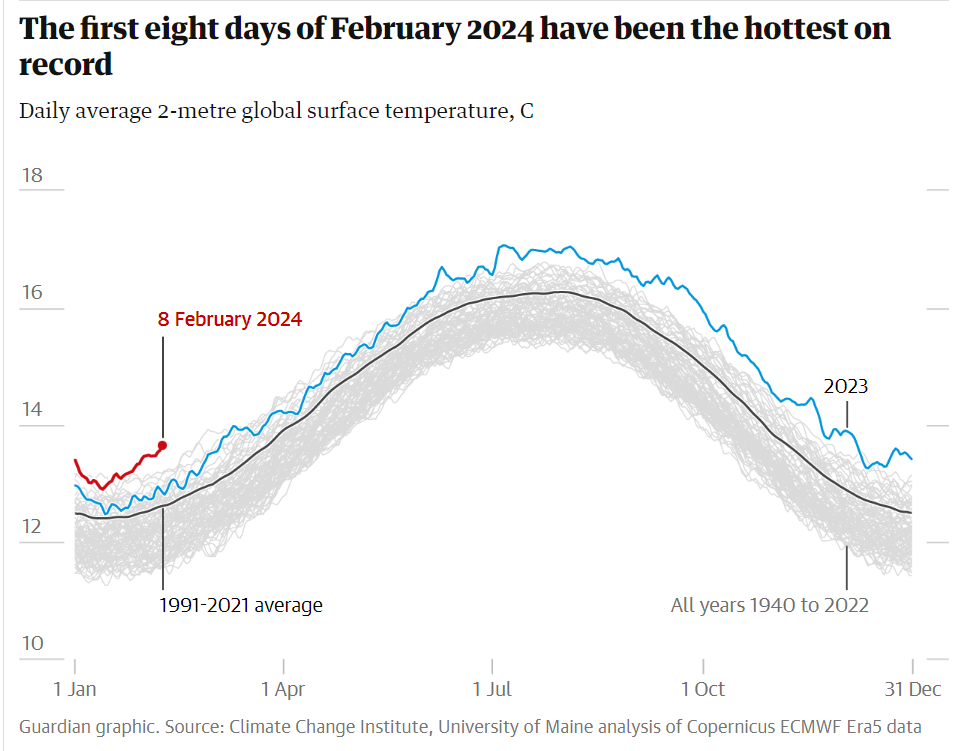Summary:
February is witnessing an alarming surge in temperatures, setting the stage for a record-breaking month. The combination of human-induced global heating and the natural El Niño climate pattern has led to rapid warming, particularly evident in sea-surface temperatures. Despite expectations of a brief peak impact from El Niño, climate experts caution that the erratic behavior of the climate makes predictions challenging. The surge in temperatures has shattered records worldwide, with numerous countries experiencing unprecedented heatwaves. Ocean surface temperatures are also reaching unprecedented levels, raising concerns about intensified storms. While the weakening of El Niño may bring some relief in the equatorial Pacific, the continued rise in carbon emissions and deforestation poses long-term risks that require urgent action.

Key Points:
Unprecedented Heating: February is on course to break heat records globally, driven by human-made global heating and the El Niño climate pattern.
Surging Temperatures: Sea-surface temperatures and land temperatures have soared, surpassing previous records by significant margins.
Record-Breaking Heatwaves: Thousands of meteorological stations have reported record-breaking temperatures, with some countries experiencing their hottest winter days on record.
Oceanic Concerns: Global sea surface temperatures are in uncharted territory, raising the potential for intense storms later in the year.
Uncertain Future: Climate experts struggle to attribute weight to different causes behind the temperature anomalies, highlighting the complexity of Earth’s response to radiative forcing.
Long-Term Risks: Continued carbon emissions and deforestation increase the likelihood of more frequent and intense heat waves and storms in the future.
Urgent Action Needed: Climate action is imperative to mitigate the impacts of global warming and prevent further environmental degradation.




